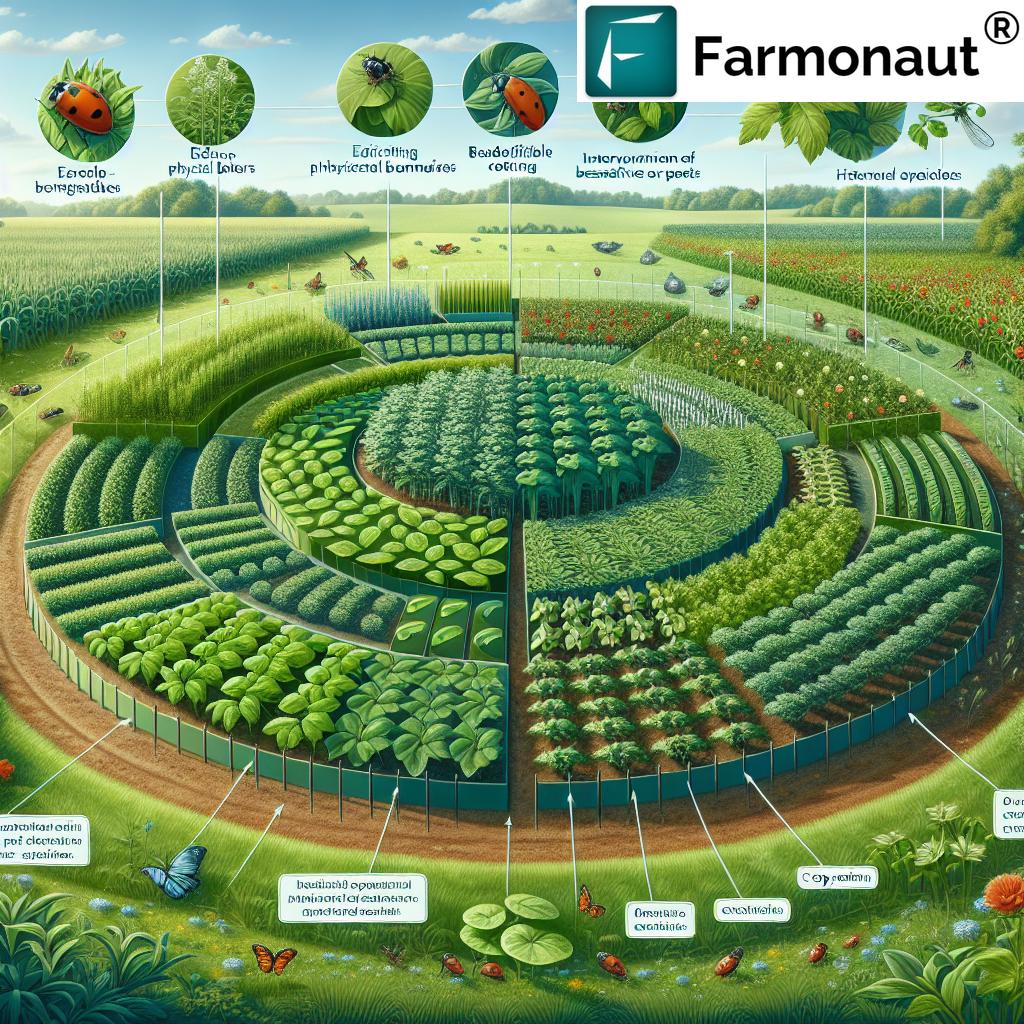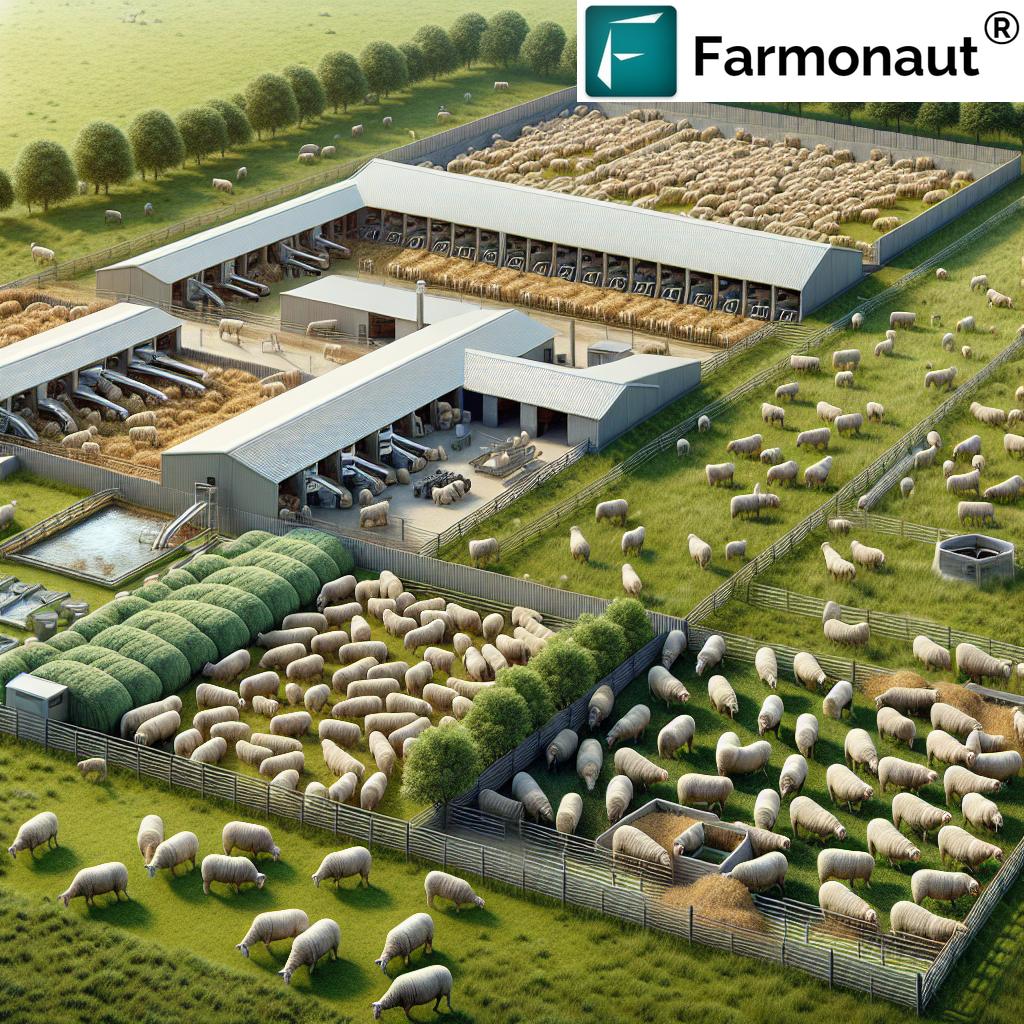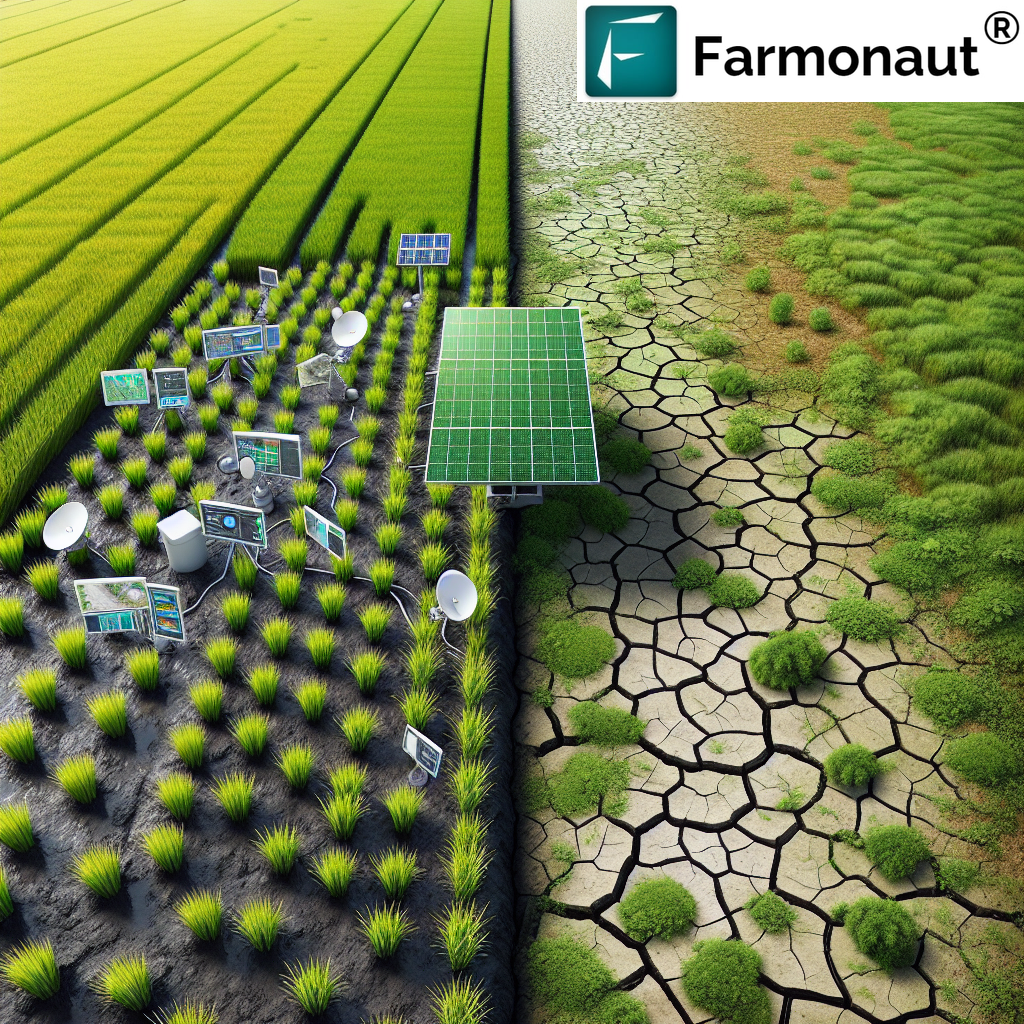How Does Crop Rotation Help Control Pests? Shocking Facts!
“Crop rotation can reduce soil-borne pest populations by up to 80%, promoting healthier and more sustainable crops.”
Summary: Crop Rotation in Pest Management
At the heart of sustainable agriculture lies a centuries-old practice that continues to prove its worth in the battle for healthy, productive fields: crop rotation. By alternating different crops in the same field across seasons, we not only optimize resource use, but also make significant strides in pest management. But how exactly does crop rotation help control pests and reduce diseases while promoting soil health? In this in-depth guide, we will uncover the “shocking facts” behind this powerful strategy, using clear scientific explanations, real-life examples, and the latest advances in precision agriculture.
The benefits of crop rotation extend far beyond yield. This integrated pest management in agriculture disrupts pest cycles, reduces soil-borne and foliar diseases, and enhances the health and resilience of both plants and soil. Through careful planning and technology-enabled monitoring, crop rotation remains our most cost-effective and sustainable weapon in fighting pests naturally.
Focus Keyword: “How does crop rotation help control pests?”
Understanding Pest Dynamics in Agriculture
To truly appreciate how crop rotation curbs pest populations, it’s essential for us to understand the basic dynamics of pests on our fields:
- Host-specific behavior: Most pests (such as insects, nematodes, fungal organisms, and certain bacteria) are specialized and thrive on specific plant species.
- Limited mobility: Many pests have restricted ability to move over large distances, making them heavily reliant on the continuous presence of their host crop within a field.
- Life cycle synchronization: Several pest species have intricately timed life cycles that are perfectly geared towards exploiting the growth stages of their preferred crops (e.g., laying eggs during crop emergence).
- Inability to survive extended periods without hosts: If the host crop is missing for sufficient periods, many pests simply cannot survive or reproduce successfully.
By rotating crops—switching between different crop species and plant families over successive seasons—we directly exploit these vulnerabilities, making it difficult for pests to establish or multiply. This is the bedrock principle behind crop rotation for pest control.
Pro Tip: Precision monitoring with platforms like Farmonaut helps us identify pest cycles in real time, optimizing our rotation strategy and minimizing guesswork.
Mechanisms of Pest Control Through Crop Rotation
Let’s examine the scientific basis of how crop rotation disrupts pest life cycles, reduces populations, and suppresses diseases in our fields. These mechanisms are crucial for achieving both high yields and sustainable pest control.
1. Disruption of Pest Life Cycles
Many notorious pests, from the European corn borer to the cabbage root fly, depend on specific crops (their host) for reproduction. By introducing non-host crops in the following season (for example, replacing corn with soybeans or small grains), we break their reproductive cycle:
- Case in point: The European corn borer synchronizes its development with the corn growth stage, laying eggs on corn plants. If we plant a non-host crop in that rotation window, newly emerging larvae are denied sustenance—resulting in steep decline in their population.
- Swede midge, an insect pest of cruciferous crops like cabbage and broccoli, can be suppressed by alternating out brassica varieties for a minimum of two years, thus preventing vulnerable seedlings from becoming infested.
2. Reduction of Pest Populations and Numbers
Some pests lay eggs in the soil hoping to ambush the following crop (such as the infamous western corn rootworm).
- By rotating out corn with a non-host crop like soybeans or a grain, newly hatched larvae fail to find a viable host and starve in the absence of their preferred food source. Crop rotation thus leads to a direct reduction of pest populations.
- Sclerotinia (white mold), a fungal disease affecting numerous plants, can be managed by rotating out host crops for 3–4 years.
3. Suppression of Soil-Borne Diseases
Many damaging pathogens (soil-borne diseases) persist in soil and have a narrow host range. By rotating susceptible crops (such as tomato, potato, or corn) with resistant varieties or completely unrelated crops (e.g., legumes, small grains), we decrease the pathogen’s presence and lower disease incidence.
- Fusarium wilt: This destructive fungus’s populations dwindle when susceptible crops are rotated with resistant legumes or cereals, increasing our production reliability and reducing need for chemical inputs.
4. Nematode Management in Crops
Nematodes—microscopic soil worms—can cause catastrophic damage to roots. Their management is a key goal in crop rotation for pest control:
- Rotating host crops with nematode-resistant varieties or non-host plants (e.g., corn to millet, or tomato to cereal) interrupts their cycle, leading to measurable decline in nematode populations.
- Regular rotation reduces root damage, boosts plant health, and ultimately results in higher yields.
Did You Know? Farmonaut’s advanced agricultural API delivers soil and crop data that helps schedule optimal rotations for all major crop types, enhancing both pest management and yield forecasting.
“Integrated pest management with crop rotation lowers pesticide use by 50%, protecting both crops and the environment.”
Impact of Crop Rotation on Pest Control and Soil Health
Here is a comparative overview of common rotation crops, with their estimated pest reduction, disease reduction, and soil health improvement—including relevant integrated pest management (IPM) strategies.
| Rotation Crop | Pest Reduction (%) | Disease Reduction (%) | Soil Health Improvement | Relevant IPM Practices |
|---|---|---|---|---|
| Wheat | 45% | 40% | High (improves structure, organic matter) | Crop rotation with legumes; residue management; monitoring aphids, rust |
| Maize (Corn) | 55% | 48% | Moderate (deep-rooting, breaks cycles) | Rotate with soybeans/grains for corn rootworm control; scout for borer |
| Legumes (Soybeans, Peas) | 60% | 66% | High (nitrogen fixing, improves texture) | Rotate with cereals/wheat for nematode management; weed control |
| Rice | 39% | 72% | Moderate (alters pest habitat, compacts/loosens soil) | Alternate with pulses or fallow for rice root nematode and blast management |
Key Takeaway: Consistent crop rotation lowers both pest and disease incidence by interrupting cycles and boosting soil health.
For detailed tracking and field advice, Farmonaut’s Large Scale Farm Management platform offers field-by-field rotation monitoring and soil-health analytics.
Effectiveness and Limitations of Crop Rotation
Not all pests are equally vulnerable to crop rotation. Understanding its effectiveness and limitations allows us to create robust, science-backed integrated pest management plans.
Where Crop Rotation Excels
-
Host-Specific, Low Mobility Pests:
- The European corn borer and Swede midge (attacking cruciferous crops) have short lives and limited movement—making them easy targets for interruption by rotating crops.
-
Short-Lived or Weakly Persistent Pathogens:
- Fungi and nematodes that decline rapidly without their host are best managed by rotating susceptible crops with non-host/resistant varieties.
When Crop Rotation May Be Less Effective
-
Highly Mobile Insects and Broad-Host Pests:
- Pests that fly or migrate easily, or attack many plant types, may evade control through rotation alone.
- Example: Some rootworm populations are adapting and laying eggs on non-traditional hosts, reducing sole rotation effectiveness—necessitating integration with other pest control methods.
-
Soil-Borne Pathogens with Long Persistence:
- Certain pathogens survive for years in soil and require extended rotations (3–6 years) or additional interventions to achieve significant control.
Real-World Practice: For pests like the western corn rootworm, deploying rotation can still slow resistance development to Bt corn varieties and chemicals, extending the overall lifespan of these solutions (source).
Implementing Effective Crop Rotation for Pest Control
For our crop rotation cycles to produce reliable pest suppression and soil renewal, thoughtful planning and integration with modern tools are key. Here are some actionable strategies:
-
Diversify Crop Sequences:
Rotate across different plant families. For example, follow corn with soybeans and then with small grains or legumes. This diversity interrupts more pest and pathogen cycles than a narrow rotation. -
Understand Pest Life Cycles:
Identify the primary pests threatening your crops, then time the rotation to disrupt their critical life stages (egg laying, larvae feeding, reproduction period). -
Integrate with Other Management Practices:
Combine rotation with:- AI-based crop advisory (for localized pest warnings and planting recommendations).
- Physical and biological controls (for example, using marigolds to attract parasitoid wasps that attack cabbage moths).
- Use of cover crops in fallow periods to maintain soil health and further disrupt pest cycles.
-
Monitor for Adaptation:
Be proactive about tracking changes—some pests may adapt to crop rotation patterns over multiple seasons. Farmonaut’s NDVI and crop monitoring can alert us early. -
Involve Advanced Monitoring Tools:
Harness real-time satellite-based field monitoring via the Farmonaut app to assess crop health, soil moisture, and signs of pest/disease hotspots.
Tip: For organizations or large-scale farmers managing many fields and complex rotations, Farmonaut’s fleet and resource management solution can streamline operations, reducing overlap and better scheduling equipment for planting and harvest windows.
Integrating Crop Rotation with Farmonaut® Technologies
As we look towards the future, it’s evident that the benefits of crop rotation multiply when combined with digital farm management technology. Farmonaut is leading the revolution in transforming how we plan, monitor, and optimize our rotation strategies for pest management in agriculture.
How Farmonaut Enhances Crop Rotation for Pest & Disease Control
-
Satellite-Based Crop Health Monitoring:
Using multispectral satellite imagery, Farmonaut helps us track crop health (NDVI, SAVI), soil moisture, and field anomalies across all our fields, detecting early signs of pest or disease pressure even before symptoms are visible. This data-driven approach lets us refine our rotation plans on the fly. -
AI-Powered Pest Management:
The “Jeevn” AI advisory system in Farmonaut delivers real-time, localized pest alerts and crop-specific guidance, supporting timely decisions and further reducing input costs. -
Blockchain for Traceability:
Blockchain technology from Farmonaut traceability platform records every field’s crop rotation, inputs, and pest management actions, ensuring transparency for buyers and compliance with sustainability mandates. -
Environmental & Resource Management:
By using Farmonaut’s carbon footprint tracking, we can quantify the reduction in emissions and carbon sequestration benefits of diversified crop rotation. -
Financial Insights for Pests & Crop Loss:
Farmonaut’s crop loan and insurance verification leverages satellite data for objective assessments in case of pest or disease-induced yield loss—speeding up claims and providing backup for our crop management decisions. -
Developer Access:
For agribusinesses and researchers, Farmonaut’s powerful developer API allows seamless integration of rotation intelligence, soil health monitoring, and pest surveillance right into your own apps.
Farmers, agribusinesses, and governments benefit through improved planning, higher yields, fewer losses, and truly sustainable, environmentally responsible farming.
Challenges and Considerations in Crop Rotation
While crop rotation is a powerful and proven pest management tool, maximizing its effectiveness requires an awareness of multiple agronomic and economic factors:
-
Market Demand and Crop Economics:
The most effective rotation sequence (for example, grains → legumes → oilseeds → vegetables) may not always align with market demand or local price fluctuations. Balancing pest management goals with farm profitability is crucial. -
Soil Fertility and Compatibility:
Certain crops may deplete (for example, continuous corn) or replenish (such as legumes, cover crops) specific nutrients. It’s important to tailor fertilizer programs and monitor soil health metrics. -
Regional Pest Populations:
Rotation intervals must be adjusted depending on pest lifecycles—some species may require two or more years out of the field to ensure population decline, while others may re-emerge rapidly. -
Potential for Pest Adaptation:
Over time, a few pests (such as certain rootworm populations) may adapt to common rotations. Continuous innovation and, when available, precision monitoring are essential. -
Implementation in Large Fields:
For very large or non-contiguous fields, logistical coordination of planting and harvesting multiple crops can pose challenges—solved by digital management tools like Farmonaut.
Conclusion: Crop Rotation as a Cornerstone of Sustainable Pest Management
In our ongoing pursuit of productive, healthy, and environmentally sound agriculture, crop rotation remains an unmatched practice for controlling pests, reducing diseases, and promoting soil health across seasons. By disrupting pest life cycles, reducing their populations, and breaking chains of soil-borne diseases, crop rotation secures the long-term sustainability and resilience of our fields. The true power of crop rotation is realized when combined with integrated pest management (IPM), technological innovation, and data-driven decisions provided by platforms like Farmonaut.
Embracing rotating crops for healthy soil not only improves our immediate yields but ensures the vitality of the land for generations to come, all while minimizing dependence on harmful chemical pesticides. By integrating actionable knowledge, practical planning, and real-time insights, we—the stewards of the land—can leverage this timeless yet modern strategy for thriving, sustainable farms.
Farmonaut Subscription Plans
Interested in harnessing satellite & AI for your farm’s crop rotation, pest control, and soil health optimization? Explore affordable plans for every type of farmer, agribusiness, or government entity:
FAQ: Crop Rotation and Pest Control
Q1: What is crop rotation?
Crop rotation is the practice of alternating different types of crops or plant families in the same field over successive seasons. This approach prevents pests, diseases, and nutrient depletion, leading to healthier crops and soil.
Q2: How does crop rotation help control pests?
By rotating crops and breaking pest life cycles, we prevent pests from establishing persistent populations. This strategy is especially effective against pests with limited mobility, host-specific feeding, or short life cycles.
Q3: Which diseases are controlled effectively with crop rotation?
Soil-borne diseases like Fusarium wilt, Sclerotinia (white mold), root rots, and nematode infestations are significantly reduced through crop rotation. By introducing non-host crops, disease pathogens decline due to the absence of suitable hosts.
Q4: Can crop rotation completely eliminate pests and diseases?
While it greatly reduces populations and diseases, some highly mobile pests or long-lasting pathogens may persist. Best results are achieved when crop rotation is combined with integrated pest management techniques and precision monitoring tools.
Q5: How can technology like Farmonaut® enhance crop rotation results?
Farmonaut integrates satellite imagery, AI, and real-time field analytics to monitor crop health, pest risk zones, and soil conditions. This data enables smarter, faster adjustments in crop rotation and resource allocation, ensuring healthier fields and optimal traceability for supply chains.
Q6: Is crop rotation suitable for all types and scales of farming?
Absolutely! Whether managing a small vegetable garden or a 10,000-hectare operation, crop rotation can be adapted to any size. Precision tools from Farmonaut offer scalable solutions with minimal additional cost and maximum impact on pest management and soil health.
Q7: Where can I learn more or get started with Farmonaut?
Download the Farmonaut app for Android or iOS, access web tools, or explore API integrations for customized farm and pest management. All links are available throughout this guide!


















